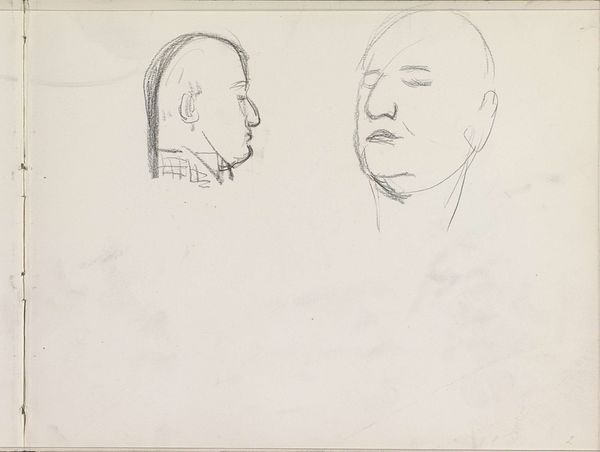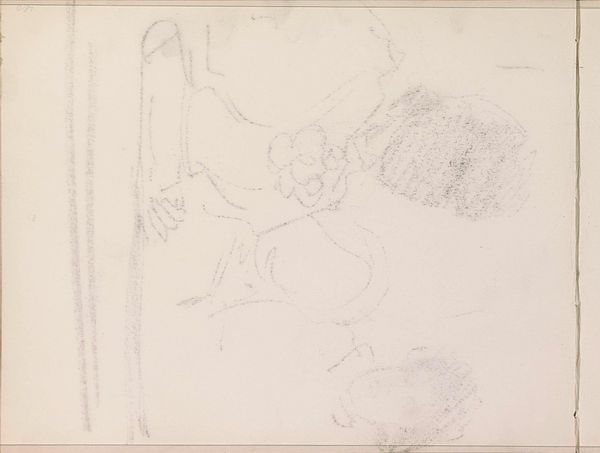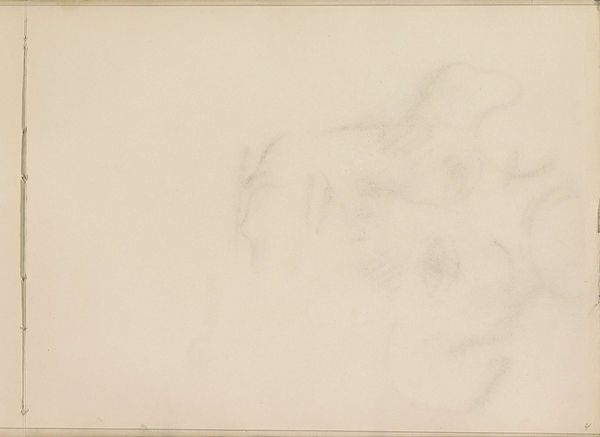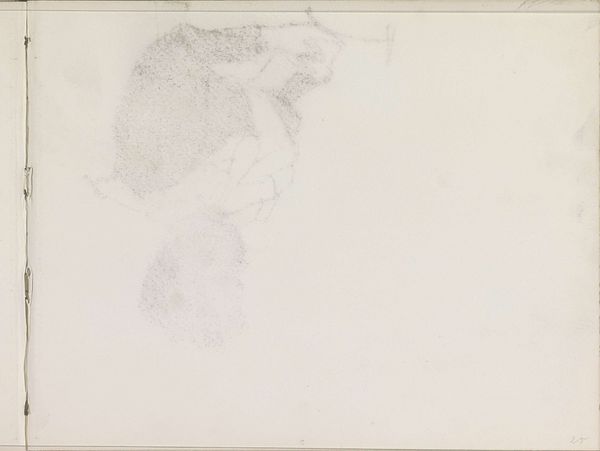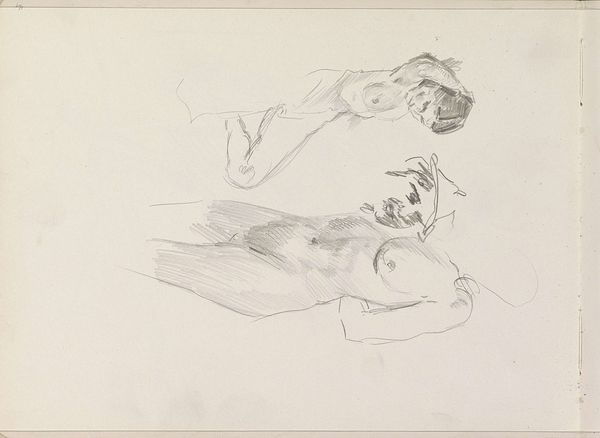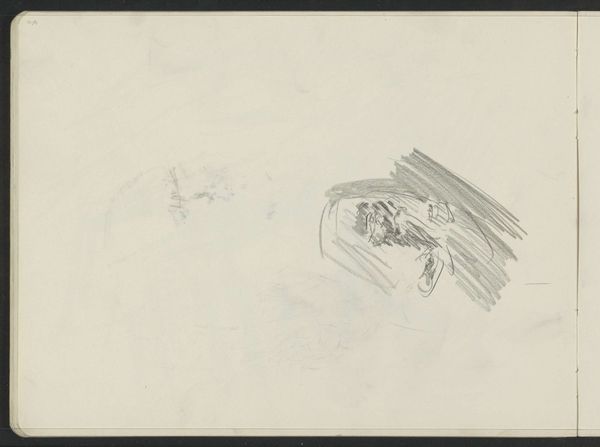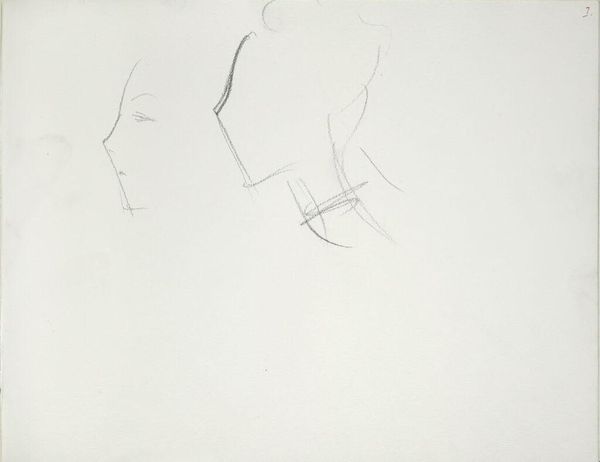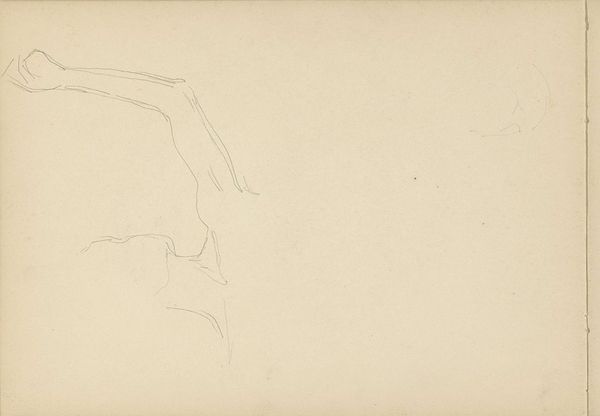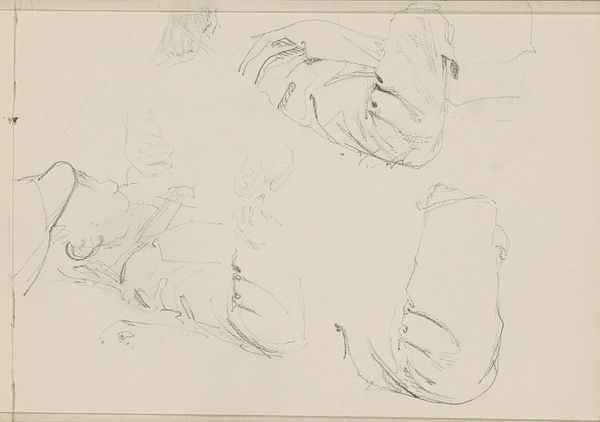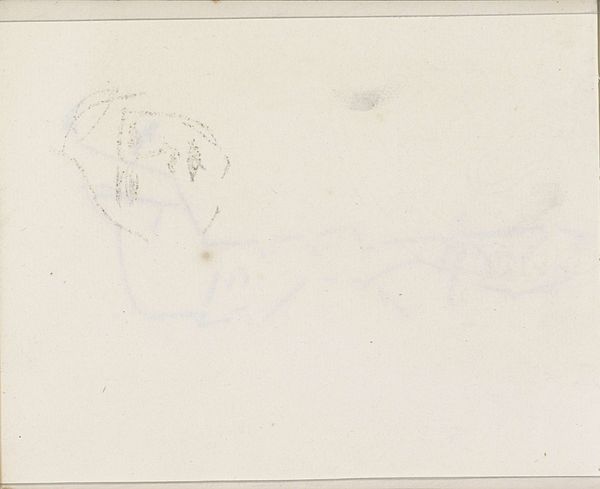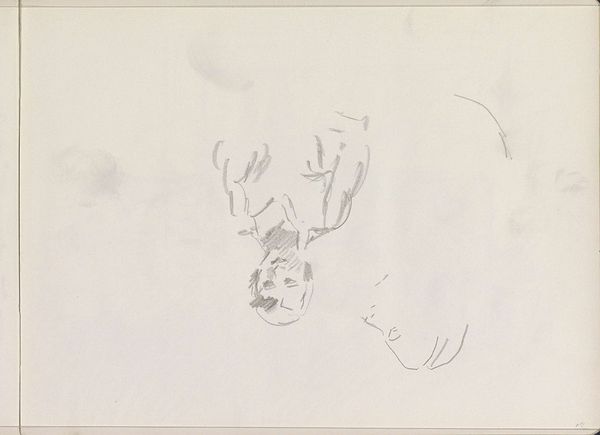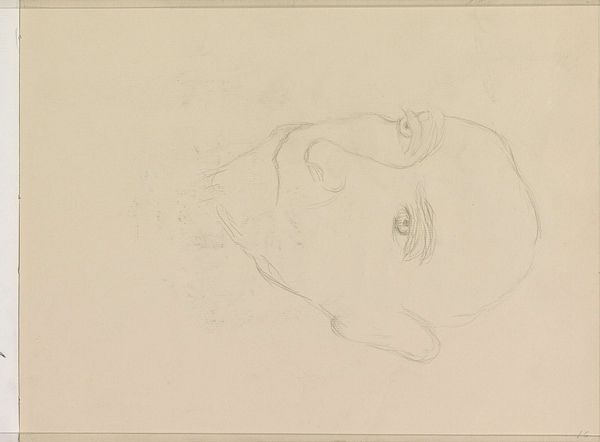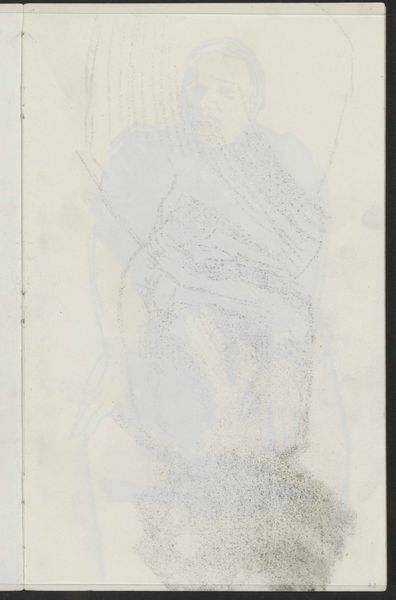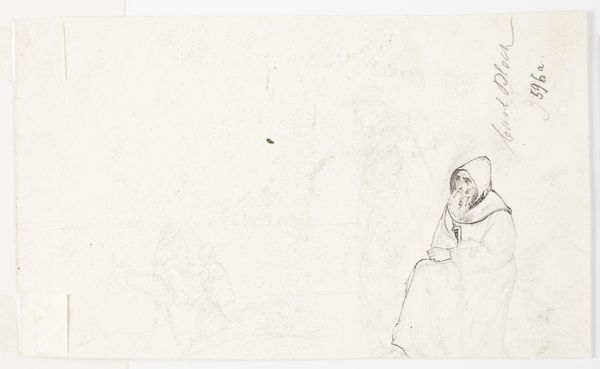
Copyright: Rijks Museum: Open Domain
Curator: Before us is Isaac Israels' "Abklatsch van de krijttekening op blad 2 recto," a pencil drawing that the Rijksmuseum dates sometime between 1875 and 1934. It seems to capture a fleeting moment, doesn't it? Editor: Fleeting indeed. At first glance, it feels ephemeral, like a memory fading. The faint lines barely contain the suggestion of faces, their expressions elusive, almost haunting. It provokes a deep sense of transience. Curator: Considering it is pencil on paper, this “fading” aesthetic is quite literal and intrinsic to the medium. Pencils offer immediacy and a raw, unrefined quality. Israels perhaps leveraged the inherent nature of the medium itself—its disposability and ease of use—to rapidly iterate his ideas. The work becomes less about the *what* of representation and more about *how* artistic labor manifests itself. Editor: That rawness amplifies its symbolic power for me. These aren't specific individuals; they're archetypes, the faint outlines of humanity. The lack of definition makes them universal, like faces glimpsed in a dream or remembered from a distant past. I feel it plays into a cultural obsession with capturing likeness, but through this ghostly medium, Israels hints at how imperfect such reproductions can be. Curator: Fascinating interpretation. I wonder, though, about Israels' engagement with the market, how his sketches and studies became valued as independent artworks, separate from larger painting projects. We're not looking at mere preparation; these images acquired a status of their own through specific practices of display and collecting, redefining notions of 'finish' in art. The material and commercial context transformed these working drafts into objects of aesthetic contemplation, reflecting a larger shift in art appreciation towards the incomplete. Editor: Perhaps. Yet the repetition, suggested by the title, "Abklatsch" indicating a rubbing or transfer, adds another layer. It becomes about reproduction, copies, echoes. I wonder if Israels meant to highlight how easily images can be duplicated, distorted, and diffused— losing their original intent or presence over time. It reflects our continuous search for stable meaning within fleeting representations. Curator: Ultimately, it allows us to see not just a drawing, but an exploration of artistic process intersecting with emerging art market structures of the late 19th and early 20th centuries. Editor: And I think it captures the elusive and constantly shifting nature of memory and representation, prompting us to look for meaning within absence.
Comments
No comments
Be the first to comment and join the conversation on the ultimate creative platform.
